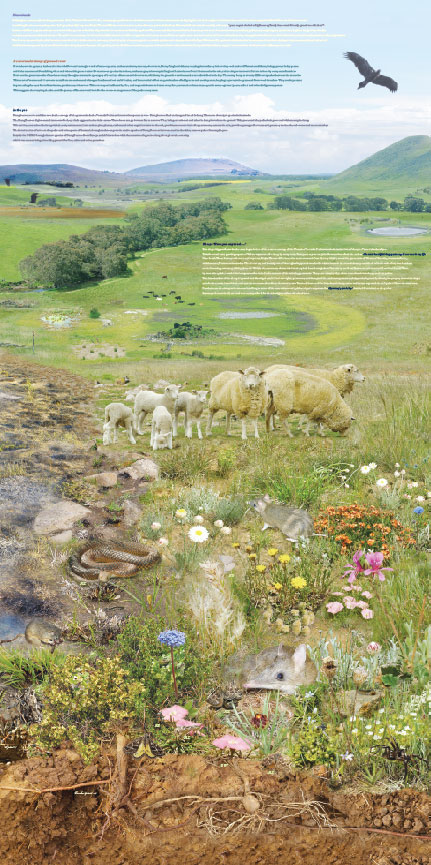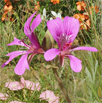
All images copyright© inherit earth
panel 5
Current Threats
Although many government departments, catchment management authorities, municipal authorities, conservation organisations such as Landcare, universities, farmers, local landowners, other groups and dedicated individuals have been and are currently working to conserve and restore the grasslands on a range of fronts, there are still many threats to the survival of these unique ecosystems and the species that live in them. Many sites have now been set aside for conservation, but most of this conservation is fragmented and isolated. This makes it difficult if not impossible for interaction of complex relationships between plants, animals and invertebrates that had evolved together and been shaped by Aboriginal management. Species diversity can be seen to be declining gradually in many remnant sites. The suburbs continue to expand into the Keilor-Werribee Plains, swallowing significant swathes of surviving grasslands. The few small animals that have survived the introduction of foxes are vulnerable to feral cats, added to by the pet cats that suburbia brings with it. Population growth itself is a major driving force behind the incremental loss of the surviving habitat on the city’s fringe. Further out in rural areas in the western district a variety of indigenous species that have survived the voracious appetites of the sheep, rabbits and the changing soil chemistry due to added fertilisers, are now falling victim to the shift to cropping. This has accelerated since the fall in wool prices twenty years ago. Preparation for cropping removes everything in its path, pulling up bulbs, cutting through root s and even removing rocks and ephemeral waterways and wetlands.
A secret understorey of ground cover
Down below the grasses, herbs and other wildflowers is a magic world of smaller plants, such as sundews, mosses, liverworts, ferns, fungi and lichens, varying dramatically in how they look under different conditions, being sparser in dry places and drier seasons and flourishing when and where things are wetter. Even smaller species than these, such as algae, microscopic fungi and bacteria also flourish unseen in the soil, and are important contributors to healthy ecosystem function. Between the grass tussocks often lies a crusty biological mat made up largely of a variety of mosses and liverworts, which may be green in wet times and almost invisible in the dry. There may be up to twenty different species between the tussocks. This crust of mosses and liverworts contributes to carbon and nitrogen fixation and soil stabilisation, and has a varied effect on germination of indigenous and exotic plants, helping to protect the grassland from weed invasion. They are important in protecting the layer from disturbance, particularly when wet. This crust layer is affected by fire, and responds better to burns every few years rather than annually, as do some legumes (pea relatives) and other indigenous plants. This suggests that varying the time and frequency of fire can work best for the overall management of the plains ecosystem.
Sheep: ‘Have you any wool ...’
The single biggest factor in the early degradation of the natural ecology of the Victorian Volcanic Plains was the introduction of sheep to Victoria in the 1830s.
This followed early glowing reports of fabulous pasture for sheep by many early European explorers. John Batman described the land as ‘the most beautiful sheep pasturage I ever saw in my life’. New South Wales Surveyor General and explorer, Major Thomas Mitchell, who came overland from Sydney (1836), called the grasslands of Western Victoria, ‘ Australia Felix ‘, which meant ‘Fortunate Australia’. This discovery and description of the region happened to coincide with a boom in the wool industry, combined with the lack of any real barriers to the incoming settlers grabbing the land. Within six years more than a million sheep had been brought into Victoria by sea from Tasmania and overland from New South Wales, by men who quickly established large areas for their flocks on most of the existing grasslands. Ten years later, by 1851, there were six million sheep on these plains. The introduction of the sheep displaced and dislodged established ecological processes, and disrupted the land management techniques being used by Aboriginal people, evolved to shape and live in association with the eco system over more than forty thousand years. The hard hooves of the introduced sheep, cattle and horses replaced the soft pads of the local mammals. Furthermore the sheep and cattle took a liking to some of the local tubers and quickly wiped out plants like Myrnong (yam daisy) that had flourished on the plains for many thousands of years and were a staple food for the Aboriginal tribes who lived here.
